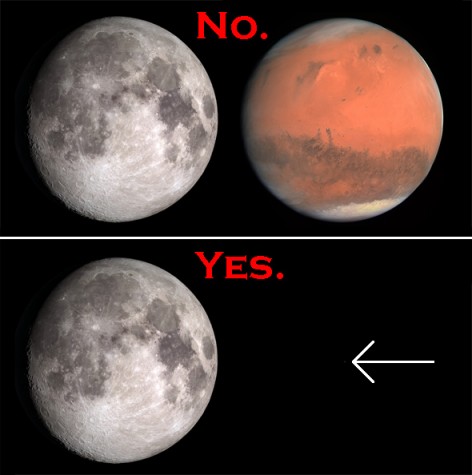Lightsabers In Real Life
Star Wars: The Force Awakens, the newest installment in the Star Wars franchise recently released on December 18. With this, nerds everywhere are waving around random sword-esque objects to the hum of a lightsaber. This poses an interesting question, how close are we to having a real-life lightsaber? Well, we don’t need the force to get an answer, because we have science. Ya!
So, what exactly is a lightsaber? The Star Wars wikia, hilariously named the “Wookieepedia”, states that a lightsaber “consisted of a plasma blade, powered by a kyber crystal and emitted from a metallic hilt.” Now what we want to focus on is the plasma blade because that’s the fun part everyone loves. Plasma in this context, is a real world state of matter, which consists of an ionized gas, that completely changes it to a new fourth form of matter. If that was hard to understand, all you really need to know is that a plasma is a superheated gas that can be used to make lasers! Some examples of plasma are things like lightning, stars and suns, and the stuff they put in the tubes in neon signs to make them light up. Plasma takes a lot of energy to be created, and in Star Wars they use “kyber crystals”. Obviously we don’t have “kyber crystals” which are fancy “force crystals” that focus the plasma energy and power the saber, but we really don’t need them. Scientists have already been able to create plasma, our U.S. Navy has even done test firing with laser cannons that have made drones burst into flames, and what’s known as a “railgun” which uses the power of plasma to fire projectiles with immense force. See what I did there? I said force, and we’re talking about Star Wars. Anyway, we have the plasma blade? So what’s stopping us from wielding the power of the dark side, and swinging cool glowy swords around?
The problem is in the power source and the control. Plasma takes a lot of power, not only to start up, but to sustain. Which is easy enough when you’re building a giant cannon of it, because the size allows room for a massive source of energy. Neon signs, need a neon power supply, or a neon sign transformer, and the bigger the sign the bigger you need the power supply to be in order to keep it going. This becomes a problem with something as small as a laser sword. You can’t fit a battery in that small hilt big enough to charge a “blade.” Scientists however, have carbon nanotubes, cylindrical carbon molecules that, if we could somehow make small enough batteries, could be chained together to make a microscopic power source. This doesn’t have a lot of research put into it however, and wouldn’t be possible for a long time. Let’s say we get that to work, this still leaves the problem of controlling it. Plasma is essentially light, so how do you control light? You can’t really. It just goes on and on, and so would your lightsaber, burning everything in its way. Which obviously is a problem, because we want it to be a “saber” not just a fancy laser pointer. Plus, when swinging it around, it would be more like waving around a flashlight, you wouldn’t get a clash of blades like in the movies. They would just pass right through each other. Scientists have also looked into this, and have discovered ways to hold plasma in a space with magnetic fields. Not necessarily controlled, but contained. They literally have lightning in a bottle, it’s great! If you really want a blade clash though, you might want to take a look at this post in the Nature journal, in which Harvard physicists explain that they found an attractive photon. What this means is that when this photon comes in contact with another, it sticks or becomes attracted to it. So instead of passing through each other, the photon would actually “connect” with another one. This happened while they were researching for a supercomputer in 2013 however, and we still don’t have lightsabers years later. There are still many issues involving power, we need enormous amounts, plus the added trouble of making the blade actually blade shaped, and not just a flashlight.
Of course, we have these problems trying to recreate science fiction, because that’s all it is, a fantasy. All the nerds of the world wish they could have it, and wield the force with a Jedi’s chosen weapon, but with the limited possibilities of technology today, it won’t be possible. Wait several decades, or a century, and then we’ll see where we stand here. Think about it though, all the “solutions to problems” I gave you here in this article. From carbon nanotube power sources, to controlling plasma with magnets. Why are we just sticking to lightsabers when we could be talking about all the amazing benefits that these technologies would give us in the real world today? There are so many uses that carbon nanotubes potentially have up it’s sleeve. It can be applied to energy storage, automotive parts, water filters, electromagnetic shields, and even body armor for the police and military! Tons of it is being manufactured right now, and it could be used to potentially save lives. I don’t think I need to explain all the ways we could advance from being able to control plasma. Imagine having the power of lightning for our own personal use. Of course, we could use it for weapons, like the U.S has already been doing, but there’s other things too. Think about it, 51 people are fatally struck by lightning in the U.S per year. If we can use magnets to put lightning in a glass jar, we could at the very least find some way to confine lightning in a way that stops it from smacking us whenever it feels like. According to this article on popularmechanics.com, scientists already have three ways to use plasma practically, one of which is an “emergency fire extinguisher.” This is possible because “flames are a form of partially ionized plasma and can be manipulated with electric fields.” This allows a blaze to be “bent” in order to make a way to escape. Just like carbon nanotubes, this is an example of a way that one of the ingredients to a real lightsaber can be used in a way to help people that doesn’t involve the good ole’ “slice and dice” method. If this doesn’t satisfy you though, and you absolutely need to have a laser sword to call your very own, consider this. If people realize all the capabilities of carbon nanotubes to hold microscopic power, or for controlled plasma to save babies from fires, maybe, and just maybe, people might start doing enough research in both fields, enough for just a single group of physicists like the Harvard geniuses, to stumble across solutions and create a real-life lightsaber just for you, but I can’t make any promises.
Hi, I’m Alexander Muralles. I started liking journalism at an early age. I had a big influence from fictional characters such as Clark Kent (Superman)...








